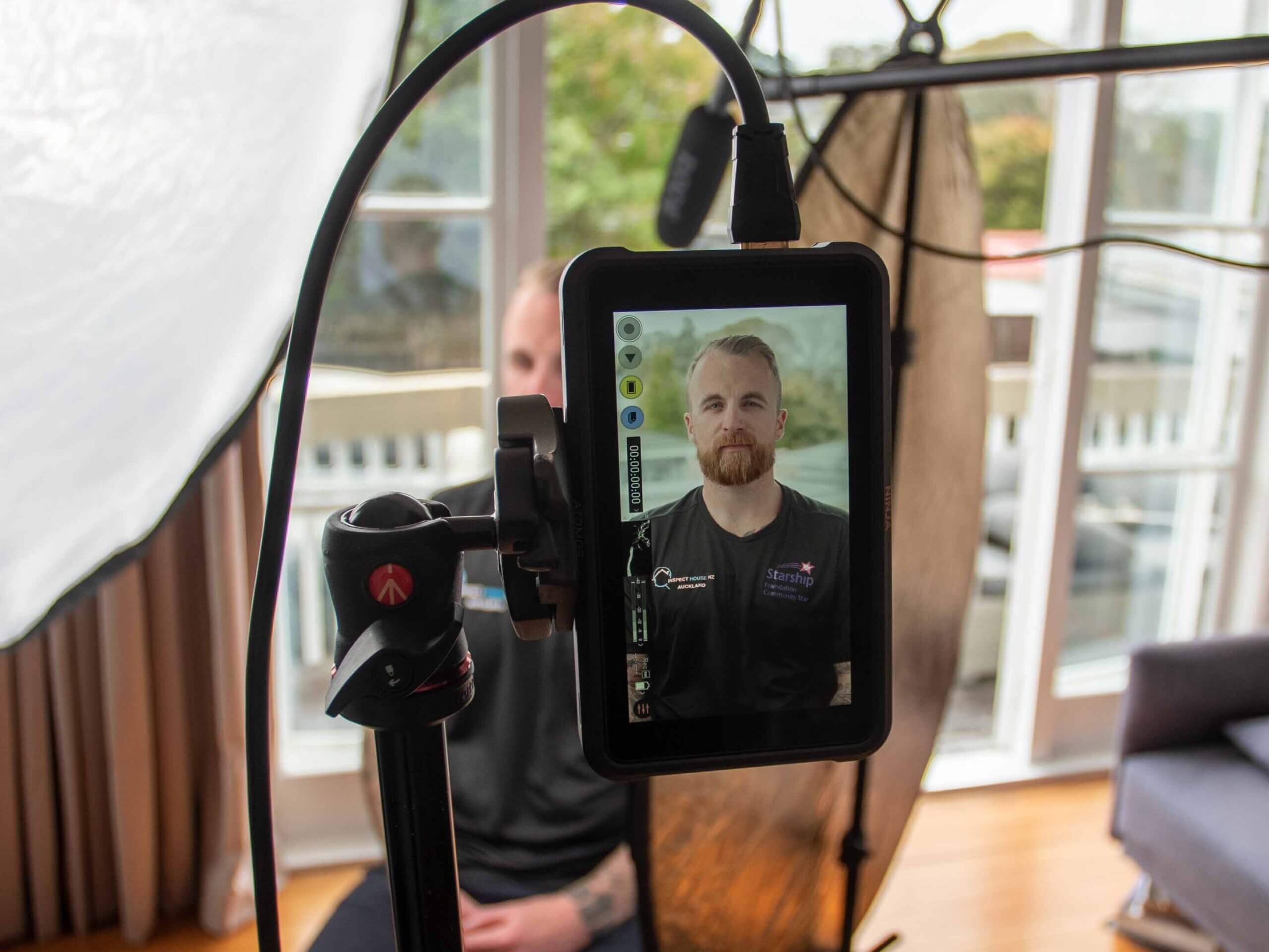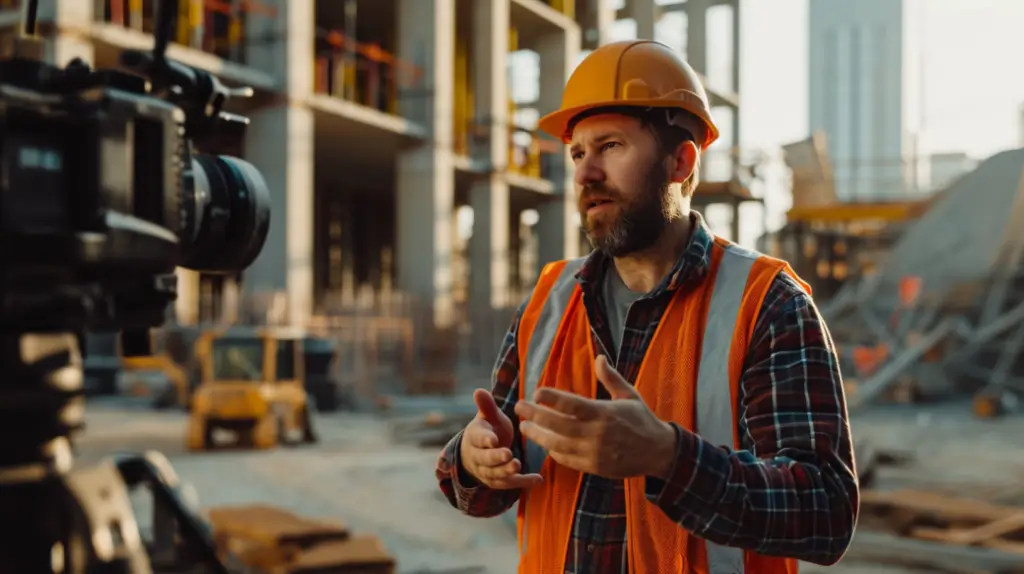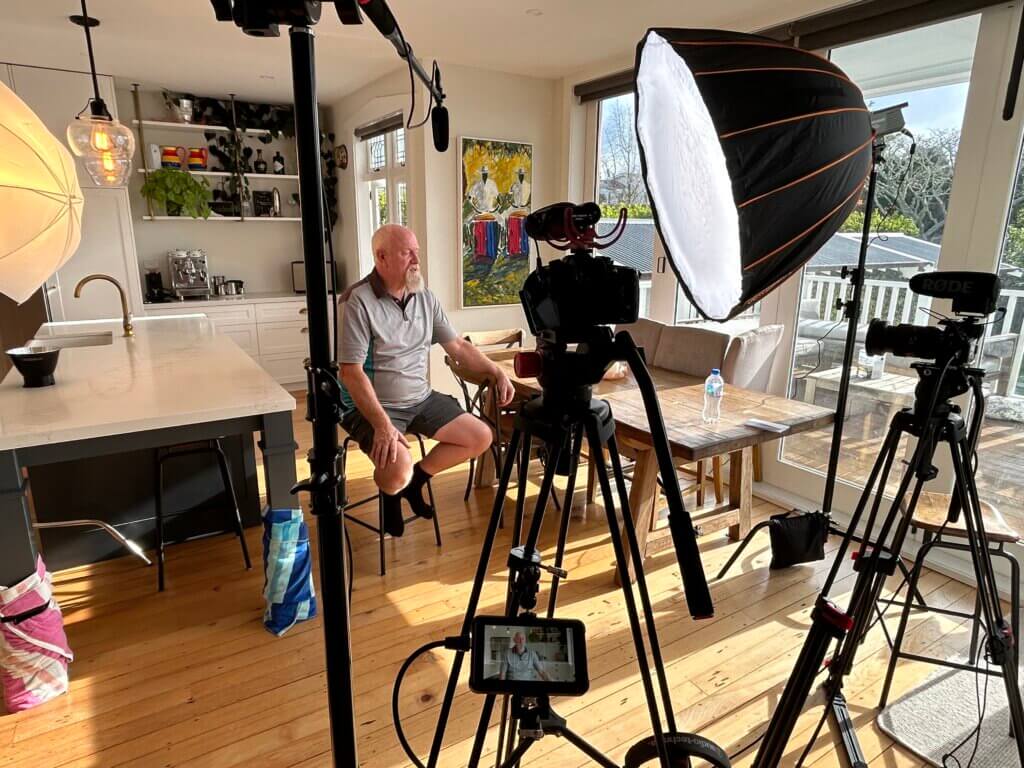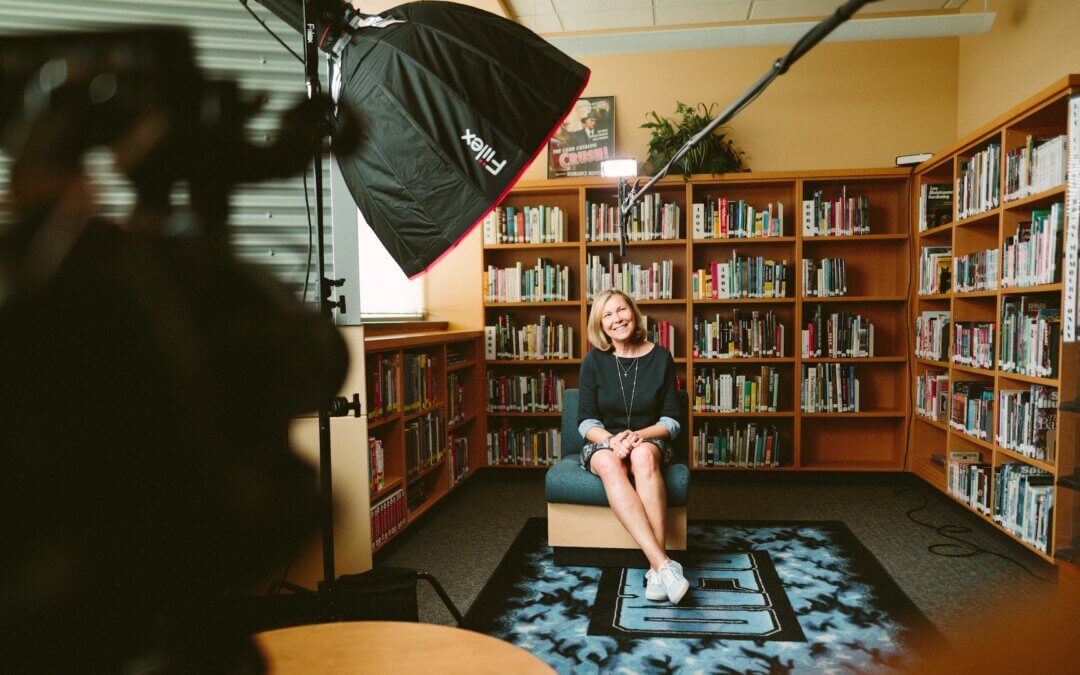The Significant Role of Testimonials in Video Marketing
The power of testimonials cannot be overstated in the dynamic world of video marketing. They’re not just a nice-to-have; they’re essential for connecting with your audience. Here’s why they pack such a punch.
First off, video testimonials are crucial to building credibility and trust. Think about it: when a real person shares their positive experiences with a product or service, it’s much more convincing than just reading about it. It’s like getting a recommendation from a friend rather than a sales pitch from a company. This personal touch can really resonate with potential customers.
In a world of online fake reviews, video testimonials come across as more genuine and less likely to be fabricated. Plus, they bring an added layer of emotional depth that text can’t match. You can see the person’s expressions, hear the tone in their voice, and feel their enthusiasm (or any other emotion they might be conveying). This emotional connection can be a powerful motivator for viewers, making them more likely to trust the testimonial and, by extension, the product or service it’s endorsing.
Power of Social Proof
Now, let’s talk about the power of social proof. We humans are social creatures, and we’re wired to value the opinions and experiences of others—especially those we can relate to. That’s where video testimonials shine. It’s incredibly impactful when potential customers see someone who looks like them or who they can identify with endorsing a product.
This kind of endorsement can often carry more weight than endorsements from legitimate or well-known sources. For example, if a company sells a weight loss product, a testimonial from someone similar to their target customers is likely much more impactful than an endorsement from a professional dietician.

The ideal length of types of video testimonials
When it comes to video testimonials, one size does not fit all. The length of your video should be tailored to the product or service you’re showcasing. Let’s dive into how you can determine the perfect duration for your video testimonials.
Firstly, consider whether your customers or clients are likely to do a lot of research before buying, which is typically proportional to the price tag. More expensive items equals more research, and vice versa.
For more straightforward products or services, a quick 30-second to 1-minute testimonial does the trick. It’s just enough to showcase a customer’s satisfaction and endorsement, perfectly suited for engaging and winning over new customers.
Conversely, people tend to do more research before deciding on more expensive items or services, like solar roof installations or wedding planning. In these cases, a longer testimonial, lasting around 1 to 2 minutes, can be more effective. It gives you enough time to delve into the benefits and features of your product or service, making a stronger case for why it’s worth the investment.
Case studies
Case studies are longer testimonials that are more suitable for professional services or products. These can be much longer as the intended audience is likely happy to spend more time researching before committing to an option. Case studies can dive deep into the results or ROI of your offering, as well as the client’s overall experience working with the company. Depending on the type of offering, these can range from 3 minutes to well over 5 minutes in length.

Ultra short testimonials
Another option is to utilise ultra-short testimonial videos in the under 15-30-second range. These are perfect for businesses selling high-volume products. The customer can film these on their smartphones.
Ultra-short testimonials are quite versatile, as they can be posted as organic content as well as paid ads on social platforms. Not to mention, you can get a number of these edited together into a longer video, which is just as versatile.
How many testimonial videos?
Lastly, the number of testimonials you have matters too. While one video testimonial is better than none, having two or three can significantly boost your credibility. Multiple testimonials offer varied perspectives and reinforce the positive aspects of your product or service, making a compelling case to your audience.
Here are some examples of testimonial videos.
Designing and Producing an Engaging Video Testimonial
Creating an engaging video testimonial isn’t a one-size-fits-all process. There are several approaches to this, each suited to different types of products and services. Let’s explore these methods to help you find the best fit for your needs.
User-Generated Content (UGC) for High-Volume Products
A straightforward method, particularly effective for lower-ticket, high-volume products, is leveraging user-generated content (UGC). This involves asking your customers to record a quick testimonial on their phones. It’s as simple as sharing their thoughts and experiences with your product. Consider offering incentives like discounts on future purchases or other perks to encourage participation. This approach adds a layer of authenticity and relatability that resonates well with prospective customers.
This method works particularly well for ultra-short testimonials under 15 to 30 seconds.
Testimonial from Video Call Interviews
Another effective approach is conducting video call interviews. This method involves structured questions designed to highlight the key points you want to emphasise. Then, the answers can be edited together into a video testimonial.
Example Video:
Tools like Riverside.fm can enhance this process by providing high-quality video and audio recording. Guests can join these calls easily through a link, bypassing the need for downloads. This method avoids issues like poor internet quality or compression problems with platforms like Zoom.
We’ll delve deeper into crafting these questions in the next section.
Conducting Testimonial Interviews
Whether doing a video call interview or filming in person, there are a few tips to ensure you get the best results possible. Here are the three essential tips:
- Ensure the person being interviewed is comfortable, especially if they are not used to being on camera.
- Ask them to try to include the question in their answer so that the viewer will understand what they are talking about without having to include the question in the video. For example, the answer to the question “How long have you been buying from us?” should be “I’ve been buying from… for x years” Instead of just “x years.”
- Repeat the interview with the same questions a few times; they don’t have to give the same answer each time. By doing that, the interviewee can be more fluid with their responses, and it provides more options for the editing phase.
Editing
Once you have your recorded material, whether it’s UGC or interview footage, the next step is editing. You can find freelance editors online or hire a production company specialising in putting together polished video testimonials. This step is crucial for weaving individual clips into coherent, engaging narratives.

Hiring a Professional Production Company
Consider hiring a professional production company for high-ticket items or to maintain a high brand image. They handle everything from planning and filming to editing the testimonials. This option is especially suitable if you prefer having on-site filming with your clients or customers. Some companies, such as RedMint Media, offer comprehensive services, including developing interview questions and ensuring they elicit the desired responses.
Professional companies can streamline the process for your clients or customers. They often set up everything in advance, requiring as little as 10 minutes from your client’s time for the interview. This is particularly convenient if the client is already on your premises for another reason, making a brief on-camera interview a minor addition to their visit.

Testimonials done by a professional production company are of higher quality than the other options mentioned. Although at a higher cost, the return on investment likely makes it a worthwhile expense, especially if the videos will be used for years to come.
How to Encourage Clients to Provide Video Testimonials?
It can sometimes feel like a big ask to ask clients to provide or participate in a video testimonial. Still, with the right approach, you’ll find that many are quite willing and enthusiastic about sharing their experiences.
Whether you’re a product-based or service-based company, there are many strategies you can use to encourage clients to share their experiences.
Timing is Key
Generally, the best time to ask for a testimonial is right after the product or service has been delivered. Why? Because the experience is fresh in the client’s mind, and they’re often more enthusiastic about sharing their thoughts. This immediate period following the delivery is a golden opportunity to capture their genuine thoughts and feelings.
Incentives for Product-Based Companies
For businesses selling products, offering a discount on future purchases or other benefits can be an effective way to encourage testimonials. It’s a simple exchange that benefits both parties—the customer gets a perk, and you get a valuable testimonial.
Strategies for Service-Based Companies
For ongoing services or even some one-off services, consider asking for a testimonial before the service is fully completed. This approach can work well as long as you’ve delivered enough value for them to speak about. Clients are usually more receptive to providing a testimonial during the active phase of your engagement with them.
For instance, as a video production company, we might produce multiple videos for a client as part of one project. Once we complete one video and are on-site to film another, it’s an excellent opportunity to ask the client for a quick video interview. It’s convenient for them and efficient for us.
The Rule of Reciprocity

Another effective strategy is to apply the rule of reciprocity. After completing a job or project, consider sending the client a corporate gift box or a bottle of wine. A thoughtful gesture like this can leave clients feeling appreciated and more inclined to reciprocate by participating in a video testimonial. Whether filmed in person or via a video call, this approach can significantly increase their willingness to contribute.
That said, if your product or service provides good value to your customer base, it should be well within reach to gather as many testimonials as you need.
How to structure video testimonial interview questions
Crafting the perfect set of questions for a video testimonial interview is crucial for getting the results you’re looking for. Here’s how to strategically approach this task.
Identifying Key Aspects
Start by considering two main aspects: your Unique Selling Points (USPs) and potential customers’ common objections. Aligning your testimonial content with these areas ensures you’re addressing what makes your offering unique and any hesitations your potential customers might have. For instance, if delivering promised results or the speed of your service are common concerns, make sure to focus on these in your testimonial questions.
Crafting Focused Testimonial Questions
Crafting the right questions becomes easier once you’ve identified the focal points. A practical approach is to think about the response you want to receive and then formulate a question that naturally leads to that response. This method ensures your questions are purposeful and directly related to the key messages you want to convey.
It’s always good to have questions that are essentially the same but phrased differently, as that would elicit different responses that might work better in the video. Just let the interviewee know that some questions may be very similar.
Here’s an example of two similar questions that might elicit slightly different responses:
1 – “Did x deliver the service in the timeframe you expected?”
2 – “Were you happy with the speed x delivered the service?”
Utilising AI Tools

Don’t hesitate to leverage AI tools like ChatGPT for assistance. You can input the main points you want to highlight in the testimonial and ask for suitable questions that would elicit those specific responses. This can be an efficient way to generate relevant and targeted questions or use it as a starting point for brainstorming questions.
You could use an example prompt: “I’m doing a testimonial interview with a client; here are the things I want to highlight in the final video… what are some questions I can ask to get the desired answers.”
Relating to Your Target Audience
If the interviewee closely resembles your ideal customer profile, gather as much context about their situation as possible. This approach ensures the testimonial resonates with your target audience, making them think, “That’s exactly my situation! I need this product/service.”
Questions like “Why did you decide to buy our product?” or “How long did you struggle with this issue before choosing our solution?” can be highly effective.
Storytelling in Testimonials
Testimonials that follow a storytelling structure are the most engaging and effective. One approach we at RedMint Media use is the “Darkest Hour” structure, a simplified version inspired by marketing expert Russell Brunson. This structure includes:
- Context: Here, the audience learns about the interviewee’s backstory, their struggles, and previous failed attempts with other solutions.
- Darkest Hour: Highlight the most challenging point in their journey (regarding the problem your solution sells)
- Solution: Discuss how they discovered your company/product and the significant difference it made, ultimately leading to an improved situation.
The structure might sound dramatic, and it may not suit every scenario. Still, it’s generally applicable to most, providing a compelling narrative arc for your testimonials.
Choosing the Right Platforms for Testimonial Video Distribution
Selecting the appropriate platforms to distribute your testimonial videos is just as crucial as creating them. At the end of the day, video testimonials will only achieve something if they get seen.
Here’s how to make the most of various platforms to ensure your testimonials effectively reach and impact your target audience.
Utilising Your Website
Your website is an ideal starting point. Featuring a few testimonials on the homepage adds immediate credibility. If you have a collection of more than three or four, consider creating a dedicated testimonial page. This organises your content and provides a go-to resource for potential customers interested in learning more about others’ experiences with your product or service.
Another idea is to use testimonials as pop-ups on your website. Imagine a visitor spending a certain amount of time browsing; a testimonial could pop up, offering a glimpse into what others are saying about your product or service. This approach can be particularly engaging and persuasive for visitors already showing interest in what you offer. Just be careful with this approach, as it could be annoying if done poorly.
Social Media Advertising

Testimonials naturally work quite well as video ads on social media platforms. The key to success here is ensuring the testimonial quickly conveys what your product or service is about within the first few seconds. This strategy helps retain the attention of interested viewers while allowing others to skip if it’s not for them. Platforms like Facebook, Instagram, and YouTube are particularly suited for this type of content.
Leveraging Short-Form Platforms
User-generated content (UGC) style testimonials are a perfect fit for short-form content platforms like TikTok, Instagram Reels, and YouTube Shorts. These snippets can be used as organic content, providing a more authentic and relatable touch to your brand’s presence. Additionally, they can be effectively utilised as individual ads on these platforms.
Combining UGC into Longer Formats
When you have several UGC testimonials, consider editing them into a longer video. This format works exceptionally well as an advertisement on non-short-form platforms like Facebook. A compilation offers a multi-faceted view of your product or service, providing a broader perspective and deeper insight into the user experience.
Do’s and Don’ts When Creating Testimonial Videos
Here are a few dos and don’ts to keep in mind:
Do’s
- Focus on Authenticity: Ensure that your testimonials come across as genuine. Avoid scripts; let your clients speak in their own words about their experiences – while guiding them to what to focus on when necessary.
- Keep It Natural: Aim for a conversational tone. Overly formal or rigid testimonials can feel insincere.
- Good Lighting and Clear Audio: Pay attention to technical details. Ensure the video is well-lit and the audio is clear without any background noise.
- Brief and Impactful: Keep the testimonials concise but powerful. They should communicate the key message effectively without dragging on.
- Diverse Perspectives: Include testimonials from a variety of clients/customers. This diversity can help your product or service appeal to a broader audience. (unless your target audience is very specific)
Don’ts
- Avoid Over-Editing: Keep the editing simple. Overly produced videos can lose the sense of authenticity that testimonials require. Production companies with experience in testimonial videos should be able to do this seamlessly.
- Don’t Use Outdated Testimonials: Well-produced Testimonials should last several years. But eventually, they will start to show their age, likely due to advancements in camera technology. Or they may become less relevant if your product or service has changed over time. Keeping testimonials updated is critical to ensuring your brand image is always current, relevant, and reflective of the latest in your offerings and customer experiences.
- Avoid Repetition: It’s perfectly fine to have some testimonials that more or less cover the same points, as it shows consistency. However, if your testimonials are too similar, they may feel scripted or inauthentic (even if they are not). Therefore, even when covering similar benefits or features, each testimonial should ideally offer a fresh angle or a personal story.
Conclusion
In conclusion, leveraging video testimonials in your marketing strategy is a powerful way to connect with potential clients and build trust. By carefully considering the type and length of testimonials, encouraging participation effectively, and employing best practices in production and distribution, businesses can create impactful, authentic content that resonates with their audience. Whether it’s through short, engaging stories or detailed case studies, these testimonials not only showcase your products or services but also provide real-life endorsements that speak volumes. Remember, the key is in the authenticity and relatability of these testimonials, making them an invaluable asset in your video marketing arsenal.
